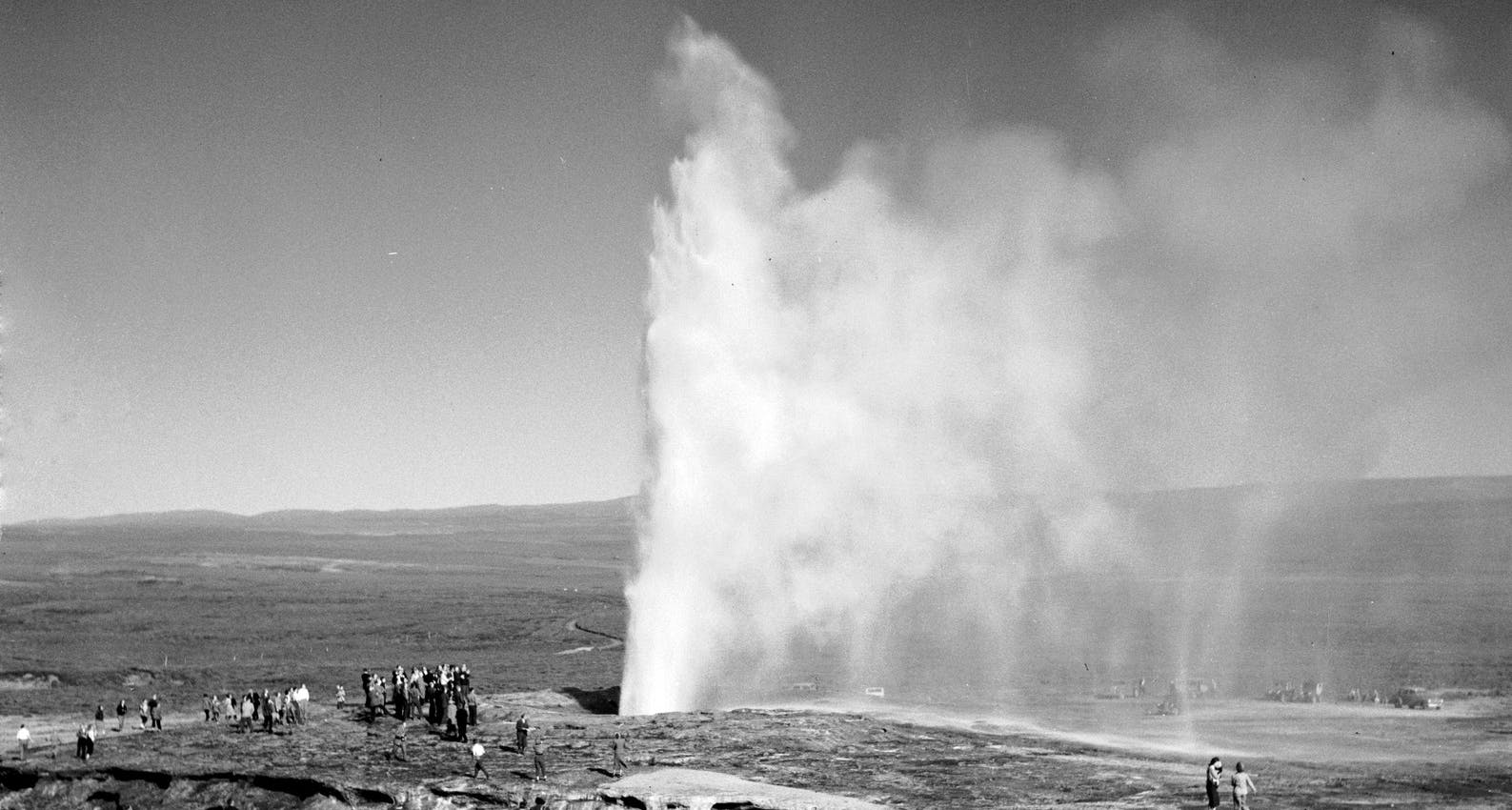
Guide to Geysir in Iceland
Geysers, those remarkable geological phenomena that shoot hot water and steam into the air, are one of nature's most captivating displays. Among these, the Great Geysir (pronounced "gay-seer", with an emphasis on the first syllable) in Iceland stands out as a majestic and enigmatic marvel.
Geysir, and its neighbour Strokkur, is one of the most visited attractions in Iceland. In this exploration, we delve into the scientific intricacies of Geysir, the surrounding area, the geothermal wonders that give rise to its eruptions, and the neighbouring spectacle, Strokkur.
Geological Formation
Geysir is nestled within the stunning Haukadalur Valley, a geothermal area in southwestern Iceland. This region is part of the famous Golden Circle, a popular tourist route that includes other attractions like Þingvellir National Park and Gullfoss waterfall. The valley is characterised by vibrant landscapes, with steaming fumaroles, bubbling hot springs, and, of course, the iconic geysers.
The geological foundation of Geysir's activity lies in Iceland's unique position on the Mid-Atlantic Ridge, where the Eurasian and North American tectonic plates meet. This geological hotspot contributes to the country's high geothermal activity. Deep beneath the Earth's surface in Haukadalur, there exists a reservoir of water heated by the Earth's internal heat. This water, when subjected to pressure, finds its way to the surface through fractures in the Earth, creating the conditions for geysers to form.
The Great Geysir: A Natural Anomaly
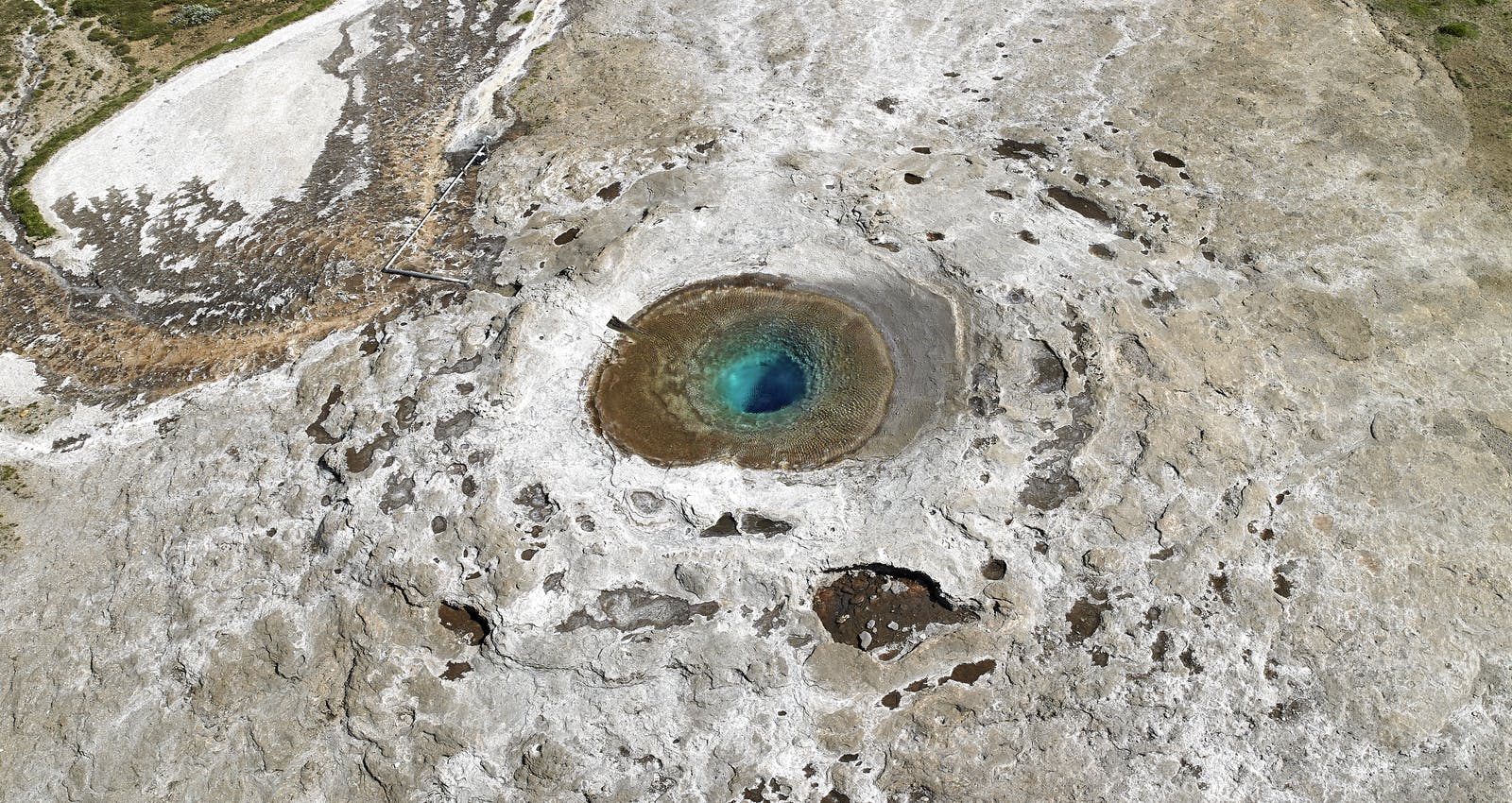
Geysir holds historical significance, having been known to erupt as early as the 13th century. However, its eruptions have become irregular over time. The word "geyser" itself is derived from the Icelandic "geysa," meaning "to gush" or "to surge." Geysir was once a frequent performer, with eruptions reaching astonishing heights. It would erupt frequently, often as regularly as every 3 hours.
However, due to natural variations in the subsurface structures, its activity has become less predictable, and it can remain dormant for extended periods. The last eruption was in 2016, and before that, in 2000. Geysir is, however, still considered active.
When Geysir does erupt, it creates a mesmerising spectacle. The eruptions, although infrequent, can reach considerable heights, sending a plume of hot water and steam skyward. Geysir's eruptions' sheer power and unpredictability add to its allure, making it a subject of fascination for scientists and tourists.
Amazing Geological Wonders
Water from glaciers, lakes, and rainfall permeates the ground through extensive fissures and cracks, occasionally accumulating in proximity to pockets of magma. As this water encounters heat, it surges back to the surface, manifesting through geysers, bubbling mud pits, hot springs, and steam vents. Remarkably, over 90% of Iceland's structures benefit from the utilisation of geothermal energy. You can learn more about this and other geological wonders at the Perlan Museum in Reykjavík.
Perlan, a distinctive landmark, rests atop six colossal tanks that historically stored Reykjavík's geothermal reservoirs. Collectively, these tanks held more than 24 million litres of water extracted from deep wells within and around the city.
The Science Behind the Eruptions
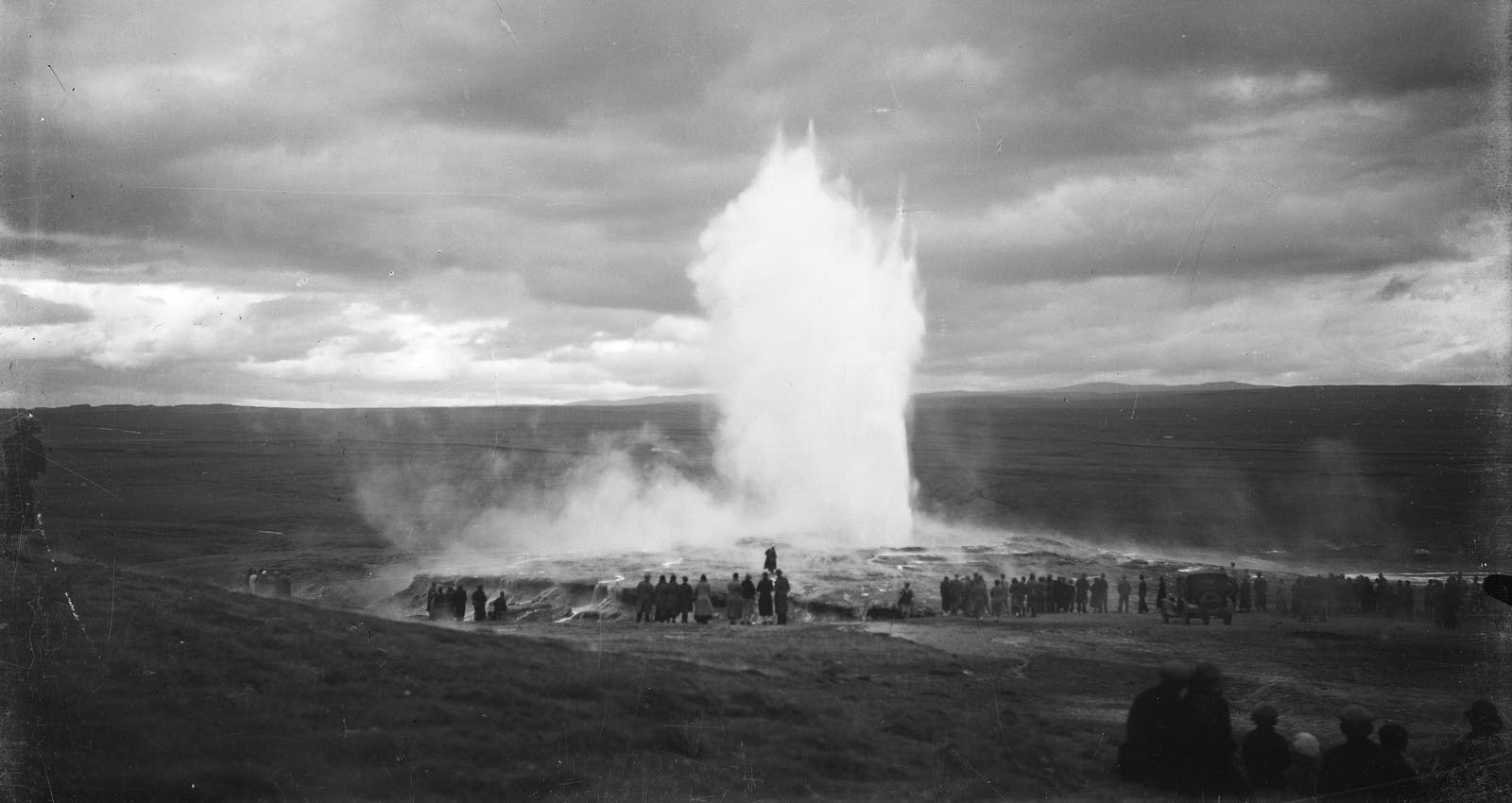
The key to understanding Geysir's eruptions lies beneath the Earth's surface. A complex interplay of geological factors orchestrates this natural performance. The process begins with the heating of water in an underground reservoir. As the water heats up, it expands and builds pressure. Eventually, this pressurised and overheated water forces its way to the surface, creating the explosive display that we witness during a geyser eruption.
Trigger Mechanism
The triggering mechanism for a geyser eruption is fascinating. A small earthquake or a disturbance in the subsurface can disrupt the delicate balance that maintains the pressure. Once this balance is disturbed, the built-up pressure is released in a spectacular eruption. The irregularity of Geysir's eruptions is attributed to the unpredictable nature of these triggering events.
Visitor Experience
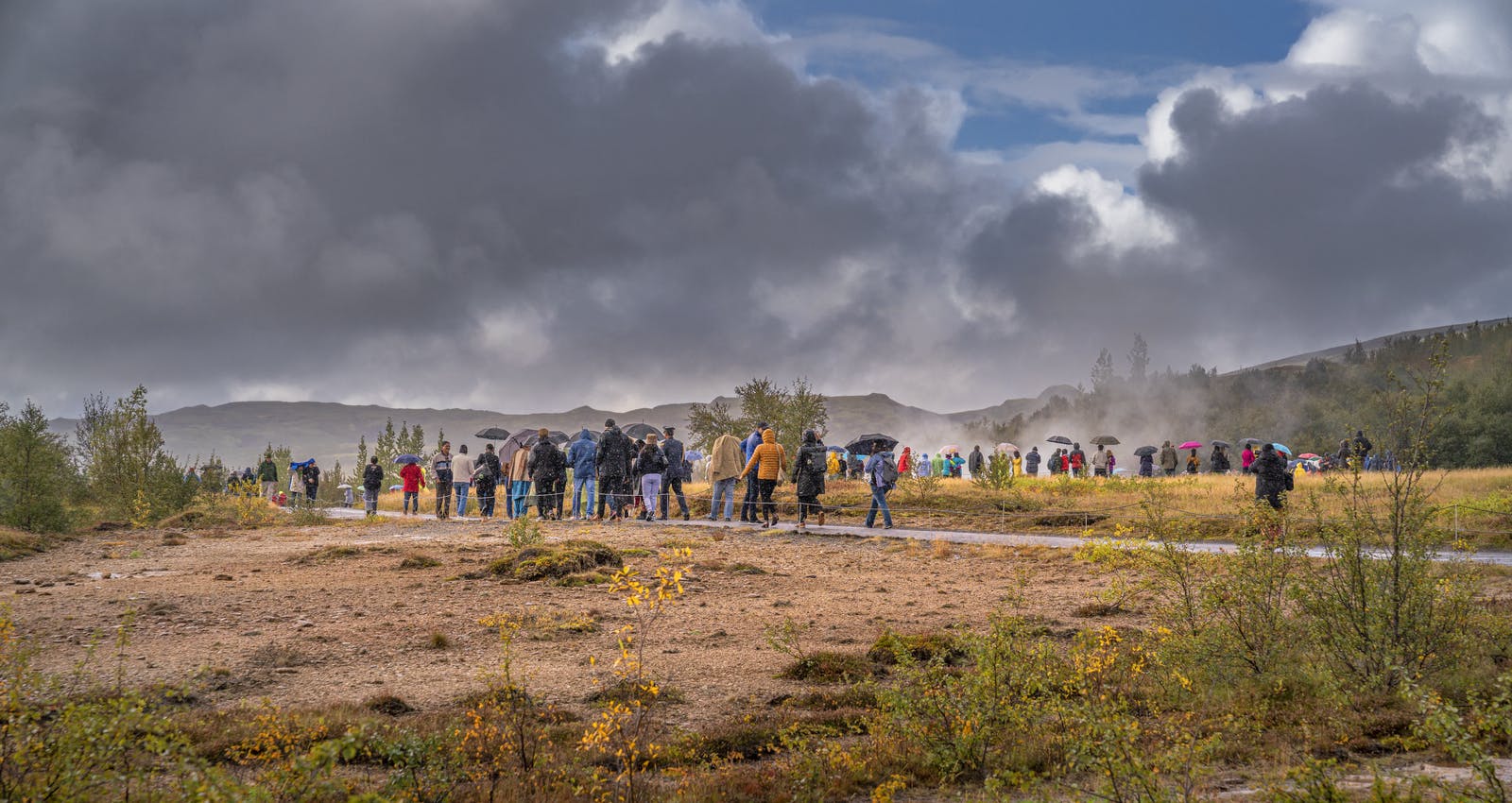
For tourists venturing into the Haukadalur Valley, Geysir is a must-see destination. The anticipation of witnessing a rare Geysir eruption adds an element of excitement to the visit. The surrounding area offers well-maintained paths and viewing platforms, allowing visitors to observe the geothermal wonders safely. The steam rising from the ground and the unmistakable sulfuric scent provide an immersive experience of Iceland's unique geology.
The Golden Circle
Geysir is an integral part of the Golden Circle, a route that showcases Iceland's natural beauty. The convenience of accessing Geysir alongside other notable attractions makes it a focal point for tourists exploring the country's diverse landscapes. The journey through the Golden Circle provides not only a glimpse into geological marvels but also cultural and historical insights.
The Geysir Center: Exploring Beyond Eruptions
Adjacent to the geothermal area, the Geysir Center offers visitors the opportunity to delve deeper into Iceland's geothermal phenomena. Informative exhibits provide insights into the science behind geysers and the broader geothermal energy landscape in Iceland. The centre serves as an educational hub, enhancing the overall understanding of the natural forces at play.
Strokkur: Geysir's Energetic Neighbor
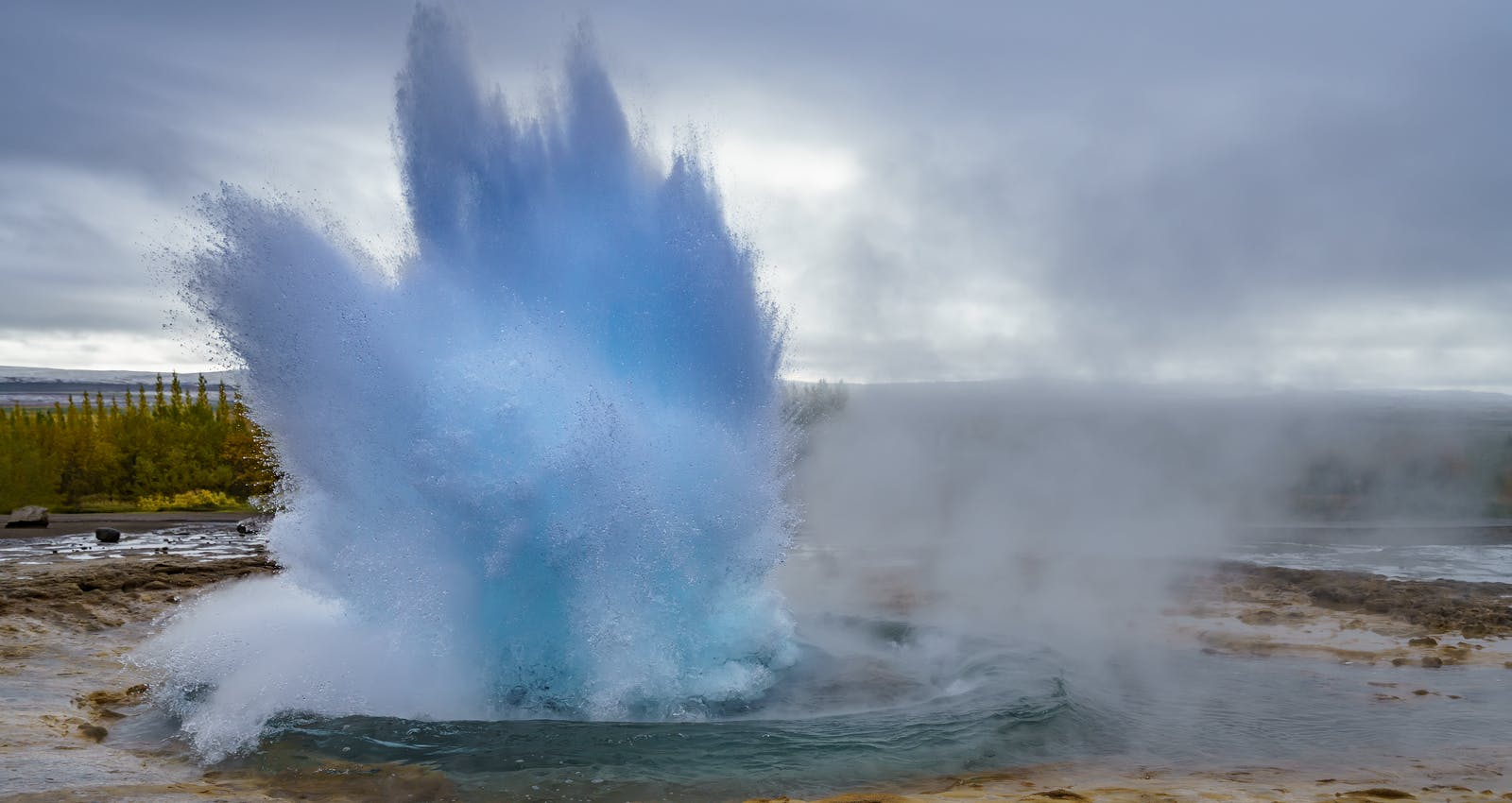
While Geysir may take a more laid-back approach to eruptions, its neighbour, Strokkur, is a tireless performer. Strokkur is located just a short walk from Geysir and has become a more reliable attraction for those seeking the thrill of a geyser eruption.
Predictable Eruptions
What sets Strokkur apart is its predictability. Unlike the sporadic eruptions of Geysir, Strokkur erupts approximately every 5-10 minutes. This reliability allows visitors to gather around the geyser, cameras at the ready, to capture the awe-inspiring moment when hot water shoots into the air.
Size and Height
Strokkur may not match the size of Geysir, but its frequent and energetic eruptions make it a favourite among tourists. The geyser propels water to heights of around 15-20 metres, creating a dynamic and photogenic display. The smaller basin size compared to Geysir contributes to the more frequent eruptions.
Accessibility
Strokkur's accessibility further enhances its appeal. Tourists can comfortably view the eruptions from a safe distance, and the surrounding facilities, including visitor centres and amenities, make it a convenient and enjoyable experience for all ages.
How To Get to Geysir from Reykjavík
The route from Reykjavik to Geysir is a popular journey for visitors exploring the Golden Circle in Iceland. The drive from Reykjavik to Geysir is approximately 115 kilometres (about 72 miles), and it takes around 1.5 to 2 hours, depending on road conditions and traffic.
- Head east on the Ring Road (Route 1) out of Reykjavík. The Ring Road is the main highway that encircles the island, and you'll be following it towards the southeast.
- Pass by the town of Hveragerði and through the town of Selfoss.
- Near the town of Laugarvatn, you'll see signs for Route 35. Turn onto Route 35.
- Follow Route 35, and you'll eventually reach the Geysir area, including the Haukadalur Valley, where you can experience the geothermal wonders, including the Great Geysir and Strokkur.
FAQ
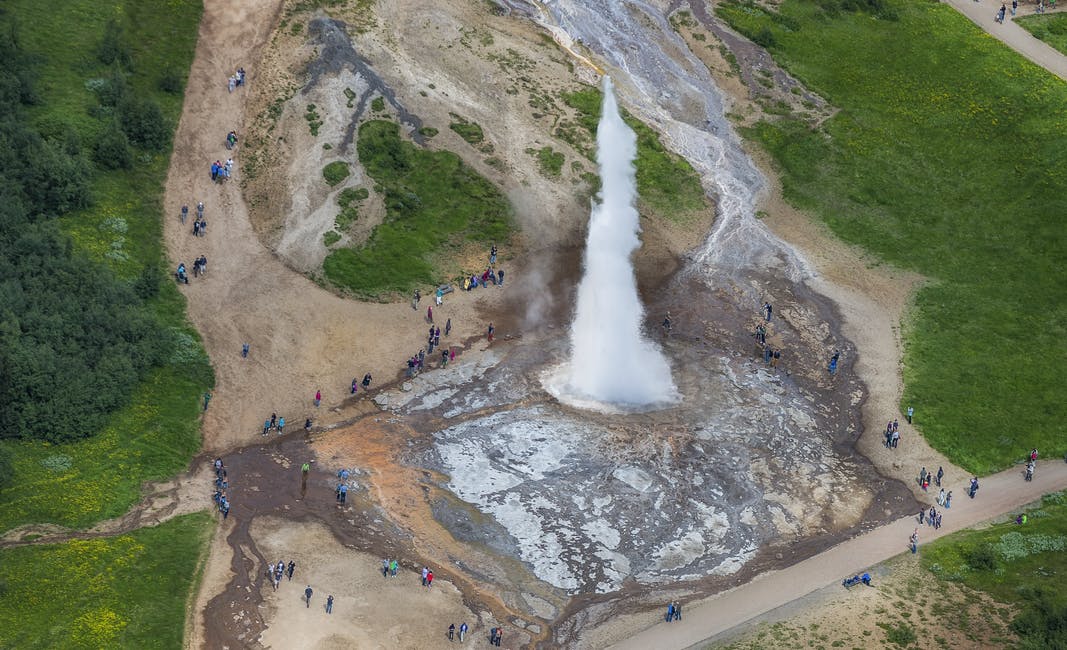
How Often Does Geysir in Iceland Erupt?
Geysir's activity has become more irregular over the years, and it can go for extended periods without erupting. In the past, its eruptions were more frequent, but due to changes in the subsurface structure, it has become less active. It last erupted in 2016, and before that, only in 2000.
What is the Difference Between Geysir and Strokkur?
Geysir and Strokkur are both geysers located in the Haukadalur Valley, but there are significant differences between them - read more about the differences in the article above.
How Do You Pronounce Geysir?
The correct pronunciation of "Geysir" is roughly "gay-seer," with an emphasis on the first syllable.
What is the Best Geysir in Iceland?
While both Geysir and Strokkur are famous geysers in Iceland, many visitors find Strokkur more captivating due to its frequent and reliable eruptions. Strokkur's predictable nature allows visitors to witness the spectacle of a geyser eruption more regularly, making it a popular choice for those exploring the geothermal wonders of Iceland.







